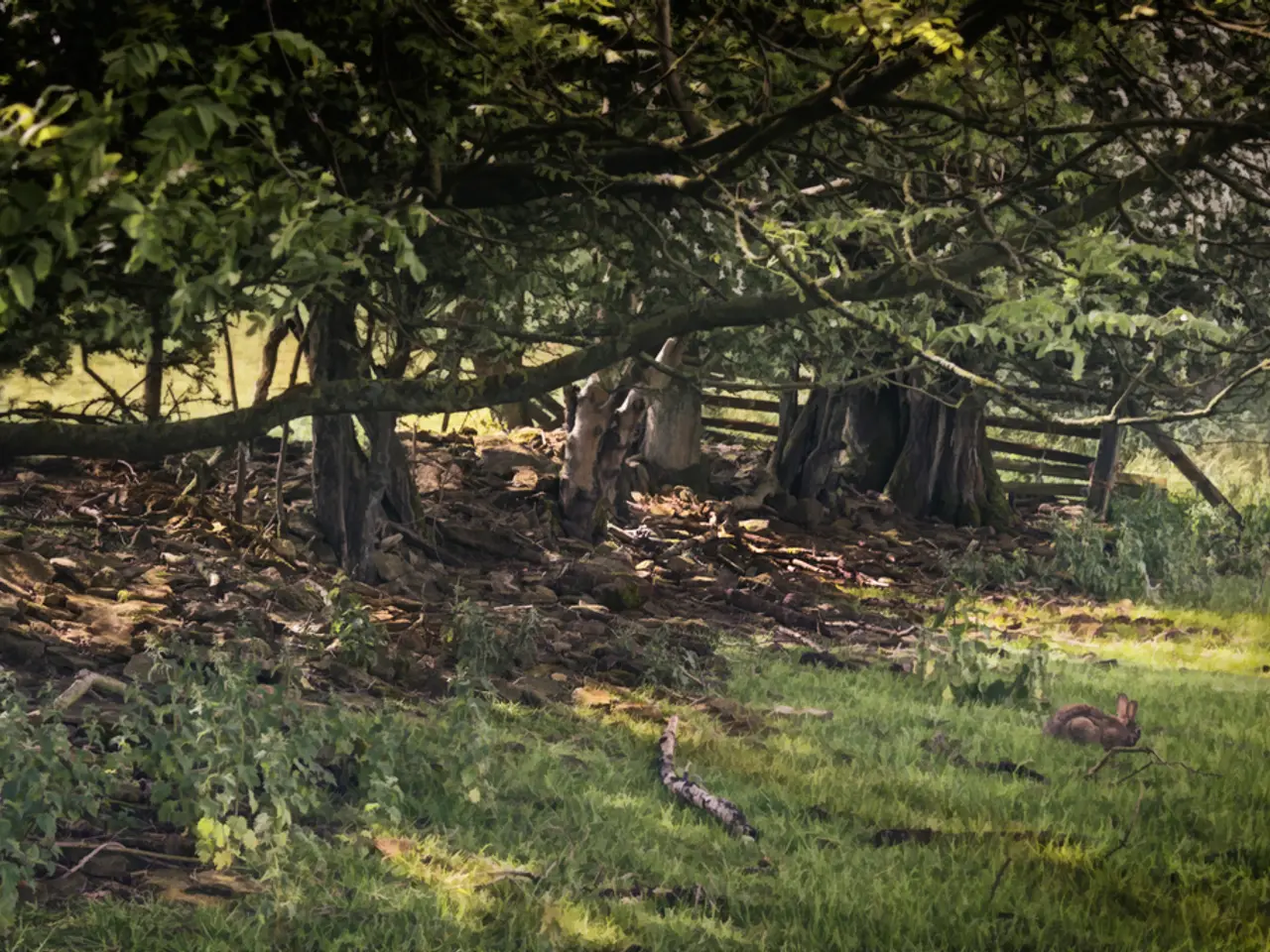Eliminating Persistent Periwinkle Groundcover Permanently: A Guide
In many gardens, the beautiful ground cover plant known as Periwinkle (Vinca major) can quickly become a nuisance due to its aggressive growth and potential for invasiveness. Here are some effective methods for removing and preventing the spread of this plant.
Removing Periwinkle
Manual removal is one of the most common methods for getting rid of Periwinkle. By pulling or digging out the plants, you can ensure that as much of the root system as possible is removed, since it can regrow from root fragments or stem pieces. Be cautious, as even small cuttings or broken branches can root and spread if left in contact with soil.
Preventing its Spread
To keep Periwinkle from taking over your entire yard, it's essential to take preventative measures. Firstly, do not grow Periwinkle near natural or sensitive areas, as it spreads aggressively by tip-sprouting and rooting from trailing stems.
Proper disposal of plant parts is also crucial. Avoid composting Periwinkle, and instead, place it in the landfill rather than reusing or discarding it in ways that could contribute to its spread.
Substituting Periwinkle with native or less invasive groundcovers can also help control its spread. Some alternatives include wild strawberry (Fragaria virginiana), woodland strawberry (Fragaria vesca), kinnikinnik (Arctostaphylos uva-ursi), or wild ginger (Asarum caudatum), especially near natural areas.
Mulching around plants can conserve moisture and suppress competing weeds, but it may not control Periwinkle itself if already established. Careful monitoring and removal are needed.
Herbicides and Other Methods
Applying herbicide to a large area covered in Periwinkle can help kill the vines without harming surrounding vegetation. Using 3-4% triclopyr 4 with a good surfactant can be an effective herbicide for killing Periwinkle vines during the dormant season or late spring.
Covering the cleared area with a black tarp or plastic can help deprive the periwinkle roots of sunlight, killing them. Leaving the plastic on for at least 6 weeks is recommended, but several months may be better to ensure the roots are dead. Large cardboard boxes can be used instead of a tarp or plastic.
Hiring someone with an excavator to dig a foot of earth where Periwinkle is can be a fast and effective method for removing Periwinkle, but it is the most expensive option. After removing Periwinkle, the area can be refilled with clean dirt for replanting.
Tips for Manual Removal
When pulling Periwinkle by hand, it's recommended to wear garden gloves to protect your hands from blistering. Remember that Periwinkle's roots are about 6 inches deep, so be thorough in your removal efforts.
To prevent Periwinkle from spreading further, bag everything pulled in plastic bags, or burn them. Do not use a weedwhacker or mower on Periwinkle, as it will only spread the plant further.
Conclusion
Effective methods for removing and preventing the spread of Periwinkle focus on careful management of plant material and avoiding conditions that enable its vigorous growth and spread. Prevention is critical, as Periwinkle spreads easily from small stem fragments. Manual removal combined with proper disposal and choosing alternative groundcovers are key strategies for control and prevention of spread in garden settings.




